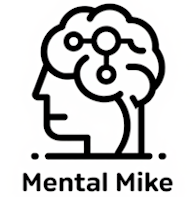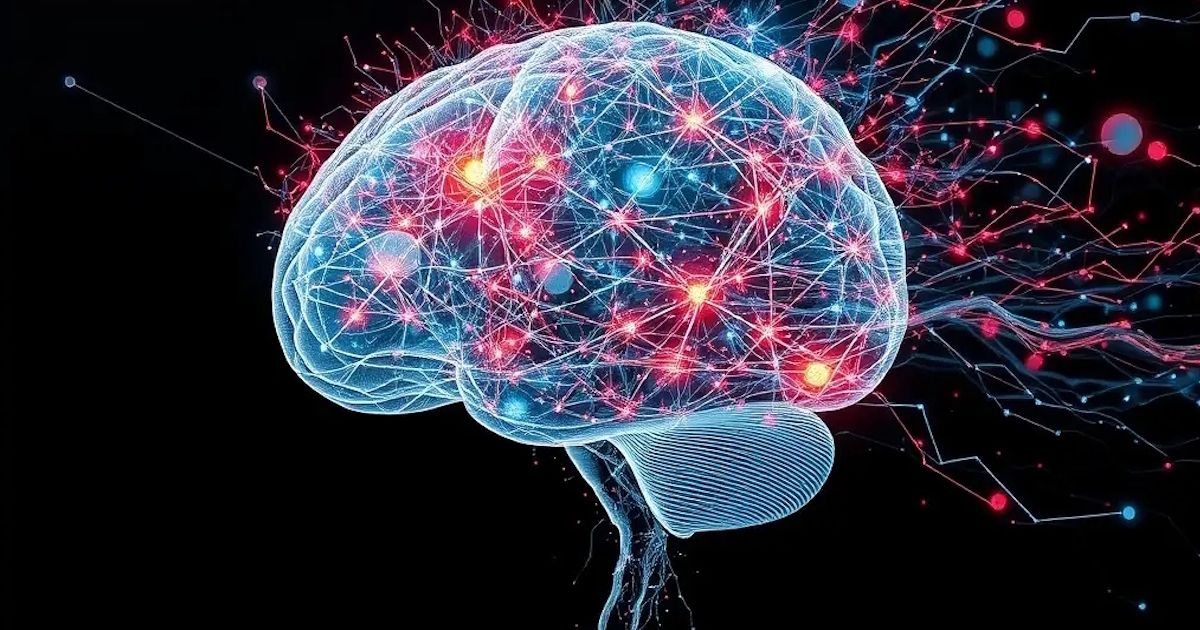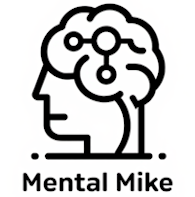If you’ve ever felt hijacked by craving - overwhelmed by the pull of a substance, a behavior, or even a memory - you’re not alone. Craving is not a simple lack of willpower; it’s a neurological bottleneck that traps attention and energy in a closed loop. And it all starts in one of the most misunderstood regions of the human brain: the Default Mode Network (DMN).
The Unified Flux Model (UFM) identifies this loop as an energetic “traffic jam,” where neural patterns, emotional signatures, and survival strategies collide leaving little room for conscious choice or spiritual alignment. To heal from addiction, we must understand this internal traffic system and learn how to reroute it. This blog explores how the DMN contributes to craving and relapse, and how the UFM framework helps dissolve the jam and restore flow, both neurologically and energetically.
What Is the Default Mode Network?
The Default Mode Network (DMN) is a large-scale brain system that activates when we’re not focused on the external world. It’s involved in daydreaming, self-reflection, memory, and mental time travel. The DMN includes the medial prefrontal cortex (mPFC), posterior cingulate cortex (PCC), and angular gyrus - regions deeply involved in our sense of self and personal narrative (Raichle, 2015). But when dysregulated, this internal dialogue center becomes a problem.
Overactivity in the DMN is linked to:
For individuals with addiction, the DMN often becomes a closed-circuit replay of pain: "I need it". "I need it.” "I don’t want it.” “I can’t stop.” The more one tries to think their way out of craving, the more intense the traffic becomes.
Craving as a Neuroenergetic Bottleneck
Craving begins in the body, but it becomes lethal in the mind. Functional MRI studies show that during craving episodes, the DMN lights up alongside the reward circuitry (including the nucleus accumbens and ventral tegmental area), creating a highly charged neural loop that floods the system with intrusive imagery and longing (Sutherland et al., 2012).
At this moment, the brain’s energy becomes gridlocked. Blood flow increases to the DMN while executive control areas (like the dorsolateral prefrontal cortex) go offline. This means the ability to self-regulate, problem-solve, or delay gratification is chemically suppressed.
In the Unified Flux Model, this neurological state is reframed as an energetic entanglement - a moment where molecular alignment, spiritual will, and conscious intention become scrambled. Like a car stuck in gridlock, the harder you try to force your way out, the more resistance you encounter.
Trauma, the DMN, and the Addiction Feedback Loop
Why does the DMN become such a trap in addiction? The answer often lies in trauma. Trauma alters the DMN’s connectivity, making the self-referential narrative more threat-oriented and emotionally reactive (Lanius et al., 2010). In individuals with complex trauma, the DMN becomes fused with survival memories, leading to persistent states of shame, hypervigilance, and helplessness.
Addiction then becomes an unconscious attempt to interrupt this loop to override the unbearable narrative with chemical relief. But repeated use reinforces the loop, as the DMN learns to associate temporary relief with the substance. This is why even after detox, cravings can persist because the story hasn’t been rewritten. UFM helps resolve this by not just suppressing the craving, but transforming the system it emerges from.
The Unified Flux Approach: Dissolving the Jam, Rewiring the Flow
The UFM program teaches that healing craving is not about suppression. It’s about flow restoration. Rather than fighting the DMN, we learn to gently redirect its energy into coherence.
This involves three key strategies:
Clients often report that the craving “melts” when their energy is aligned because the source of the pull was never about the substance, but about the disconnection.
Craving as a Signal, Not an Enemy
One of the most profound insights in UFM is this: craving is a message, not a mistake. It is your system calling for reconnection. Asking for relief, yes, but also asking to be seen, held, and re-integrated.
The DMN can be a trap when left unchecked. But it can also be a portal when guided intentionally. In contemplative traditions, this same network lights up during spiritual reflection, compassion meditation, and visionary states (Brewer et al., 2011). The difference lies in the frequency of attention. When fueled by fear, the DMN becomes a mirror of trauma. When infused with awareness, it becomes a mirror of the soul.
From Traffic Jam to Open Road
In recovery, you don’t have to destroy the DMN, you have to free it. The Unified Flux Model teaches clients to become not just survivors of craving, but engineers of internal flow. Through daily practice, compassionate inquiry, and energetic recalibration, they learn to turn traffic into momentum.
The loop unwinds. The story shifts. The craving loses its grip.
And something deeper, older, wiser, and more coherent, comes online.
The Unified Flux Model (UFM) identifies this loop as an energetic “traffic jam,” where neural patterns, emotional signatures, and survival strategies collide leaving little room for conscious choice or spiritual alignment. To heal from addiction, we must understand this internal traffic system and learn how to reroute it. This blog explores how the DMN contributes to craving and relapse, and how the UFM framework helps dissolve the jam and restore flow, both neurologically and energetically.
What Is the Default Mode Network?
The Default Mode Network (DMN) is a large-scale brain system that activates when we’re not focused on the external world. It’s involved in daydreaming, self-reflection, memory, and mental time travel. The DMN includes the medial prefrontal cortex (mPFC), posterior cingulate cortex (PCC), and angular gyrus - regions deeply involved in our sense of self and personal narrative (Raichle, 2015). But when dysregulated, this internal dialogue center becomes a problem.
Overactivity in the DMN is linked to:
- Rumination
- Shame and self-criticism
- Craving loops
- PTSD flashbacks
- Identity fusion with negative experiences
For individuals with addiction, the DMN often becomes a closed-circuit replay of pain: "I need it". "I need it.” "I don’t want it.” “I can’t stop.” The more one tries to think their way out of craving, the more intense the traffic becomes.
Craving as a Neuroenergetic Bottleneck
Craving begins in the body, but it becomes lethal in the mind. Functional MRI studies show that during craving episodes, the DMN lights up alongside the reward circuitry (including the nucleus accumbens and ventral tegmental area), creating a highly charged neural loop that floods the system with intrusive imagery and longing (Sutherland et al., 2012).
At this moment, the brain’s energy becomes gridlocked. Blood flow increases to the DMN while executive control areas (like the dorsolateral prefrontal cortex) go offline. This means the ability to self-regulate, problem-solve, or delay gratification is chemically suppressed.
In the Unified Flux Model, this neurological state is reframed as an energetic entanglement - a moment where molecular alignment, spiritual will, and conscious intention become scrambled. Like a car stuck in gridlock, the harder you try to force your way out, the more resistance you encounter.
Trauma, the DMN, and the Addiction Feedback Loop
Why does the DMN become such a trap in addiction? The answer often lies in trauma. Trauma alters the DMN’s connectivity, making the self-referential narrative more threat-oriented and emotionally reactive (Lanius et al., 2010). In individuals with complex trauma, the DMN becomes fused with survival memories, leading to persistent states of shame, hypervigilance, and helplessness.
Addiction then becomes an unconscious attempt to interrupt this loop to override the unbearable narrative with chemical relief. But repeated use reinforces the loop, as the DMN learns to associate temporary relief with the substance. This is why even after detox, cravings can persist because the story hasn’t been rewritten. UFM helps resolve this by not just suppressing the craving, but transforming the system it emerges from.
The Unified Flux Approach: Dissolving the Jam, Rewiring the Flow
The UFM program teaches that healing craving is not about suppression. It’s about flow restoration. Rather than fighting the DMN, we learn to gently redirect its energy into coherence.
This involves three key strategies:
- Interrupt the Loop Somatically - Through trauma-informed breathwork, grounding practices, and somatic journaling, clients re-engage the body’s here-and-now awareness. This helps deactivate the DMN and bring online the salience network, which monitors present-moment stimuli and reorients attention (Menon, 2011).
- Reroute Narrative Identity - In UFM, craving is understood as the energetic echo of a past self calling for help. Through guided memory integration, visualization, and symbolic reclamation rituals, clients can rewrite their default narrative. Instead of identifying with the craving, they learn to observe it as a temporary signal, not a definition.
- Activate Coherent Energy States - Using meditation, frequency-based rituals, and alignment exercises, clients build an energetic field that supports intention over impulse. In quantum terms, this means creating a coherent wave state strong enough to override the fragmented, entangled pattern of the craving loop (Bohm, 1993).
Clients often report that the craving “melts” when their energy is aligned because the source of the pull was never about the substance, but about the disconnection.
Craving as a Signal, Not an Enemy
One of the most profound insights in UFM is this: craving is a message, not a mistake. It is your system calling for reconnection. Asking for relief, yes, but also asking to be seen, held, and re-integrated.
The DMN can be a trap when left unchecked. But it can also be a portal when guided intentionally. In contemplative traditions, this same network lights up during spiritual reflection, compassion meditation, and visionary states (Brewer et al., 2011). The difference lies in the frequency of attention. When fueled by fear, the DMN becomes a mirror of trauma. When infused with awareness, it becomes a mirror of the soul.
From Traffic Jam to Open Road
In recovery, you don’t have to destroy the DMN, you have to free it. The Unified Flux Model teaches clients to become not just survivors of craving, but engineers of internal flow. Through daily practice, compassionate inquiry, and energetic recalibration, they learn to turn traffic into momentum.
The loop unwinds. The story shifts. The craving loses its grip.
And something deeper, older, wiser, and more coherent, comes online.



